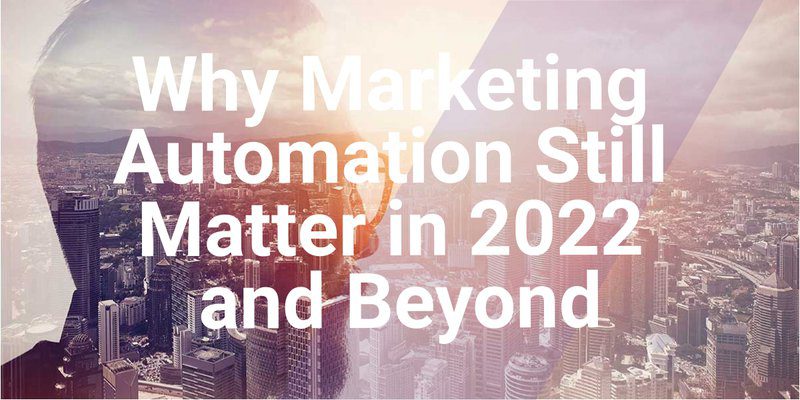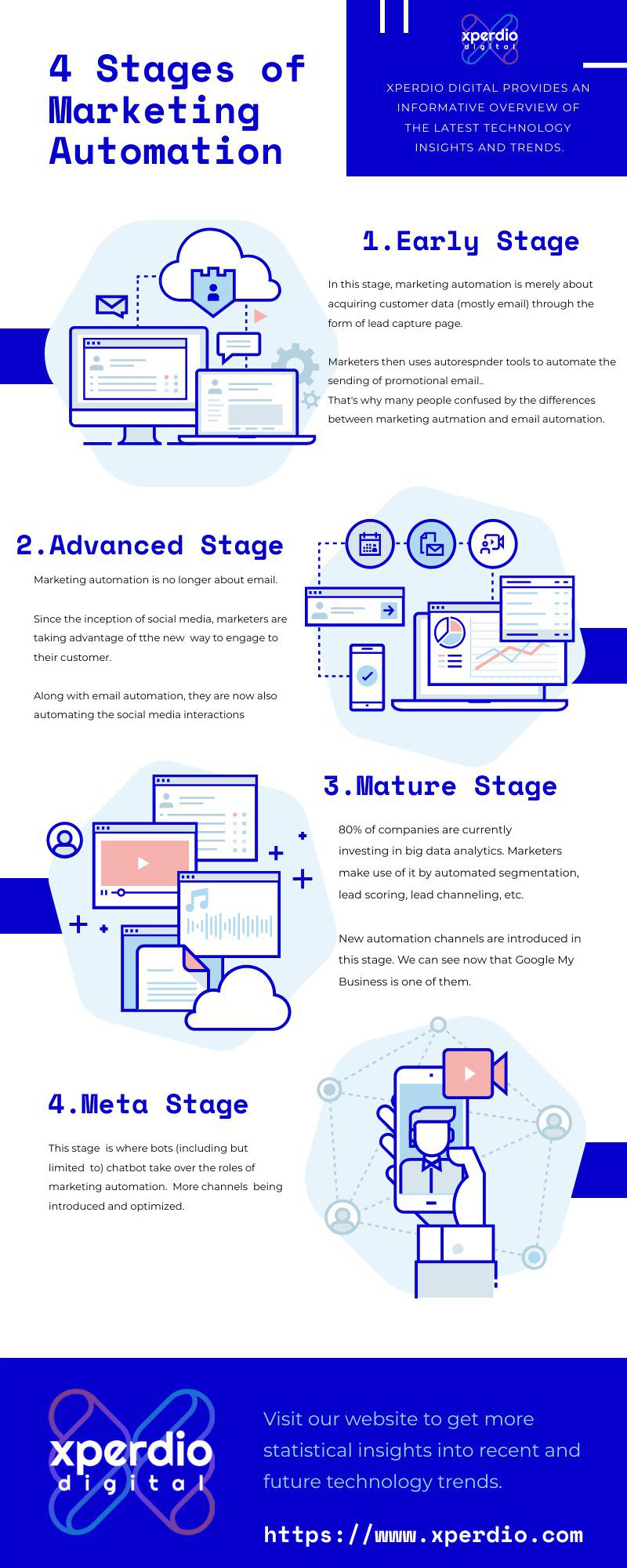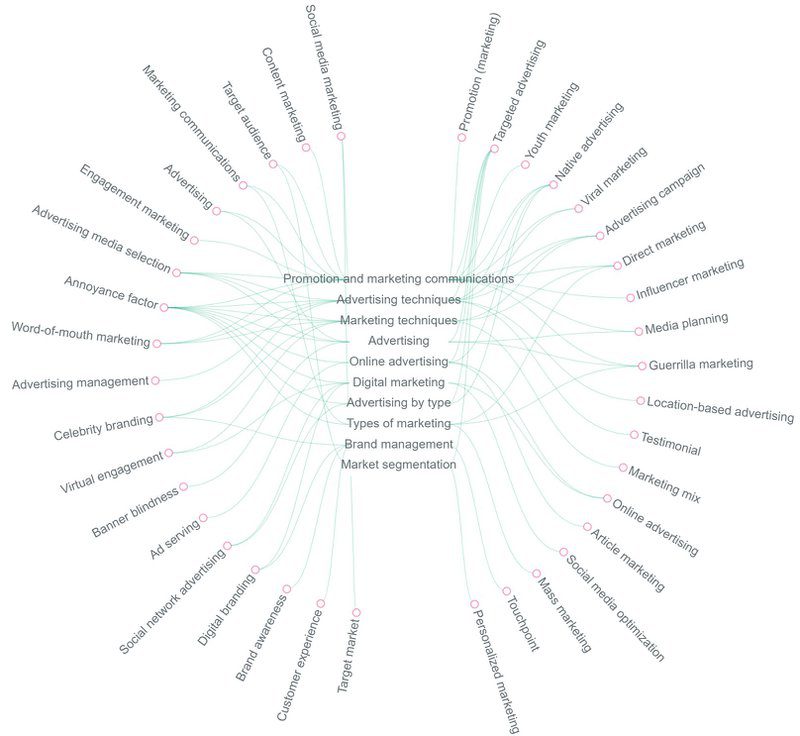
Believe it or not, marketing automation will be more important in the future.
Why is it so important?
Before answering that basic question, we must first understand what marketing automation really is.
What Is Marketing Automation, and How Does It Help Marketers?
Try to search Google for the definition of marketing automation, and you will find lots of meanings and definitions from many resources.
The good news is that you don't need to read further beyond this point. However, there will be a lot of confusion when choosing which tools to use for your marketing automation endeavor.
Marketing automation is a combination of the words “marketing” and “automation.”
It refers to software, systems, or platforms designed for automating various aspects of your business' marketing efforts.
Businesses use automated tools to manage their entire customer lifecycle, from lead generation to sales conversion.
They can be as simple as an email campaign builder or as complex as a full-blown CRM platform.
Certain marketing tasks such as email marketing, posting to social media, and launching ad campaigns can be time-consuming to perform by hand.
In addition to being inefficient, these tasks take an impersonal, one-size-fits-all approach to outreach. This limits the effectiveness of these efforts, resulting in lower marketing ROI and reduced customer engagement.
Marketing automation software is designed to resolve these challenges. Automating these tasks across channels leads to happier, more satisfied customers and increases marketing effectiveness and return on investment.
Marketing automation eliminates the need for you to send a one-off email every time you wish to talk with your contacts or clients, and it also eliminates the need to hand tag your clients when they show an interest in your products and/or services.
If you want to execute your approach the way you want, you can set up an automation to do it, which will run in the background of your company.
It gives you a way to be there for your customers, even when you are on a trip, exercising, or taking care of yourself.
The best marketing automation software helps you create personalized campaigns that are based on customer data. It allows you to send a message at the right time with relevant content.
You also have the ability to track how well these emails perform, so you know which ones work and which don't.
The key here is finding a tool that lets you personalize every aspect of your campaign from start to finish.
Good marketing automation reaches its full potential when it helps move leads through the inbound marketing funnel.
Your strategy should be dedicated to one central focus: your customers.
The best way to nurture leads is by using a lead nurturing program that will help you identify and qualify them as they progress down the sales process, from awareness of your product or service all the way through the close.
This requires setting up an automated email campaign for every step along their journey so that you can engage with them at each stage.

Marketing automation will become a marketing beast when it is already in the meta stage. It will automate almost everything.
What are those? You may ask.
Let's take a look at it in all its related fields.

What does a typical automated marketing workflow look like?
The marketing automation workflows reflect the customer journeys throughout the sales funnel.
With the automation tools, we can set up either simple workflows or complex workflows.
The typical workflow consists of the following tasks:
1. Lead Generation – The first task is generating new leads. This can be done by giving a lead magnet for the exchange of lead's data, such as email address or WhatsApp's phone number.
2. Qualification & Filtering – After capturing details of a prospect or potential customer. You'll need to filter out those who aren’t qualified enough to receive further communication.
3. Content Creation – Once you've identified qualified leads and filtered or segmented them, you start creating content according to each segment's needs.
4. Content distribution & promotion – Sending informational content and promotional content using automated IF/THEN features of marketing automation.
5. Follow-up — (automated message sequences, churn prevention, cart abandonment, etc.)
Let's imagine the below simple example.
Say, you're a writer who would like to promote your book.
You've been having many social media channels with significant followers in each one.
Now, talking about automation, what's the possible workflow?
There will be many scenarios. One of them could be like the following:
1. You create a teaser chapter.
2. You fire up your automation tool to create your lead capture page. You use your teaser chapter as the lead magnet.
3. You put the campaign tracking code on the lead capture page to know which campaign gives the best conversion.
4. You set up another similar lead capture page, with a different angle or point of view, for the purpose of A/B testing.
5. You set up automated filters for the campaigns, based on the lead behavior and/or intent.
6. You set up an automated email sequence for each campaign. It's from the welcoming email to the after-sales emails.
7. You set up a schedule to automatically publish your lead capture pages to all your social media channels.
8. You run the campaigns and monitor their progress.
9. You tweak the winning campaign and let the tool redo the process.
Now, whenever a visitor to your lead capture page grabs your teaser chapter, you will get his or her email address. The automation tool then sends out a welcome email with a thank-you note in it.
2 or 3 days later (depends on your set-up), the automation tool sends another email. This time, ask if the lead is enjoying the chapter. This time, the email is also promoting the book purchase with a special discount.
Now, this is the interesting part.
When the lead agrees to purchase, the automation tool will tag him or her and move his or her email to the buyers' group. For this group, you may set another email sequence to promote your workshop, mastermind, coaching program, or anything that is related to the book subject. You can charge more for these kinds of follow-up programs.
Now, imagine if all those repetitive tasks should be done manually. Furthermore, the above workflow can be just one of many automation workflows available.
You get the point, right?
Fortunately, talking about automation, you can also automate your workflows into SOPs (Standard Operating Procedures) that can be executed and monitored repeatedly. You can choose between Process Street or Flowster.
Automation simplifies our marketing efforts.
If you have marketing teams, be it big or small, you can shift their concentration to other areas that need human interactions.
What does marketing automation mean for the customer experience?
Your marketing strategy may include automated emails and postcards, as well as other tools to help automate your marketing and ensure you're connecting with customers at every stage of their journey with your business.
Customers will trust your brand more if they feel like you've created every marketing message just for them.
A lot of companies use a method of email called a drip campaign, sending out pre-written emails at regular intervals. Many companies are now providing this kind of email marketing campaign.
Marketing automation allows you to send out custom messages to different groups of people based on customer interest and customer behavior. This kind of segmentation makes online marketing campaigns more complex because it's possible to reach better-quality contacts.
Automating how you interact with prospects and existing clients is what it's all about. Companies like Salesforce or Vbout have built their own suite of products specifically designed to make selling easier.
Automated marketing means more personalization than ever before.
Even if they don't know who the consumers are, marketers can deliver highly targeted messages to them using marketing automation.
Companies are able to send a message to everyone, regardless of where they are located, thanks to automation. And because these messages are triggered by specific events, they tend to be shorter and less overwhelming than traditional broadcast advertising.
What Are the Benefits of Marketing Automation?
When using a marketing automation platform, you need to research your target audience and create a buyer persona to tailor your campaigns to them.
Let's take a closer look at what marketing automation isn't.
It can reduce customer loyalty if you use the wrong marketing form. It's rewarding when you use marketing automation to send personalized, relevant content to your contacts, not spammy emails.
This includes features like landing page builder, built-in CRM, reporting capabilities, social media management, and so much more.
Marketing automation can help you stay in touch with your customers. You can use it to create automated messages that are triggered by specific actions.
For example, if someone signs up for your email list, you could send them a welcome message. If they click a link in that email, you could send them an offer. If they purchase something from you, you could automatically follow up with them to see if they have any questions about their purchase.
Automated emails are a great way to stay in touch with your customers.
Moreover, this type of communication doesn’t require human interaction or approval, making it easy to scale quickly as your business grows.
The interesting part is, automated emails are just beginning. It's in the early stage of marketing automation. Meanwhile, most of us now are in the mature stage.
While marketing automation is an incredible tool that often helps businesses achieve real results, those results don't occur without the right processes, strategies, and efforts set in place.
Marketing automation objectives are meant to enhance and support marketing and sales, not completely replace the human factor. Don't sit back and expect marketing automation to reach your business goals without you implementing a marketing automation strategy and sticking with it.
If you follow the trends, you can see the number of companies advancing to the mature stage of marketing automation is growing. It will continue to grow and evolve over time, especially since there are now more ways to optimize it than ever before.
The best way to stay ahead of the curve is to keep learning new things and stay current on industry news.
How Can You Use Marketing Automation tool Effectively?
Now, after knowing the what and the why of automated marketing, it's time to look at the how.
Just a reminder, automated marketing is not only about email marketing automation, but you must be aware that most of the tools are indeed provided by email service providers. Thus, they take the role of marketing automation providers as well.
Marketing automation is built around digital marketing strategy. Its main purpose is to gather leads and put them into the sales pipeline. The intention is to convert leads into customers.
The key features include the tracking of online behavior, studying customer profiles, qualifying leads, building personalized customer experiences, converting hot leads into quality leads, etc.
To be able to use marketing automation technology effectively, marketing departments or marketing leaders must understand their marketing plan and marketing processes first prior to migrating to the automation tools. It is to ensure marketing productivity.
The next step is to follow the onboarding process provided by the tool provider.
Since different businesses have different processes, it is best practice to craft an SOP (Standard Operating Procedure) to prevent human error and to ensure a seamless customer journey.
How Do I Choose the Right Platform?
Understanding what type of company you run is the first step in choosing a marketing automation solution. There are many organizations, from small local shops to large global corporations. Each has its unique needs and requirements.
It's a good idea to find out if you want to focus on email marketing, webinars series, or other areas.
Next, choose between cloud-based solutions or software-as-a-service. Cloud-based platforms offer flexibility while being cost-effective for smaller operations. On the contrary, SaaS offers better control and customization options.
Lastly, consider whether you need one platform or multiple ones. A single platform may work fine for some businesses, but others might require several platforms working together. For example, HubSpot provides both CRM and CMS capabilities.
Remember that whatever tool is chosen, it should represent all the marketing activities of the marketing team. Each team has to have and understand its key performance indicators. They also need to know how to use the tool effectively.
Effective marketing automation will also include social media marketing capabilities. It also has marketing analytics that can be used to track marketing performance or campaign performance.
Conclusion
Forrester predicts that marketing automation will be one of the fastest-growing innovations over the next five years.
Marketing automation tools have come a long way from being used by large enterprises to being used by small as well as mid-sized companies. No wonder marketing automation is no longer a nice-to-have, it's a must-have!
Talking about innovation, we can expect that it also needs to include strategies, processes, workflows, and supporting technologies. That should also include customer relationship management or enterprise resource planning. And of course, it should be able to automate all of those strategies, processes, and workflows.
All in all, if you're looking for a solution that's going to make your life easier while helping you grow your business, then look no further than marketing automation.



